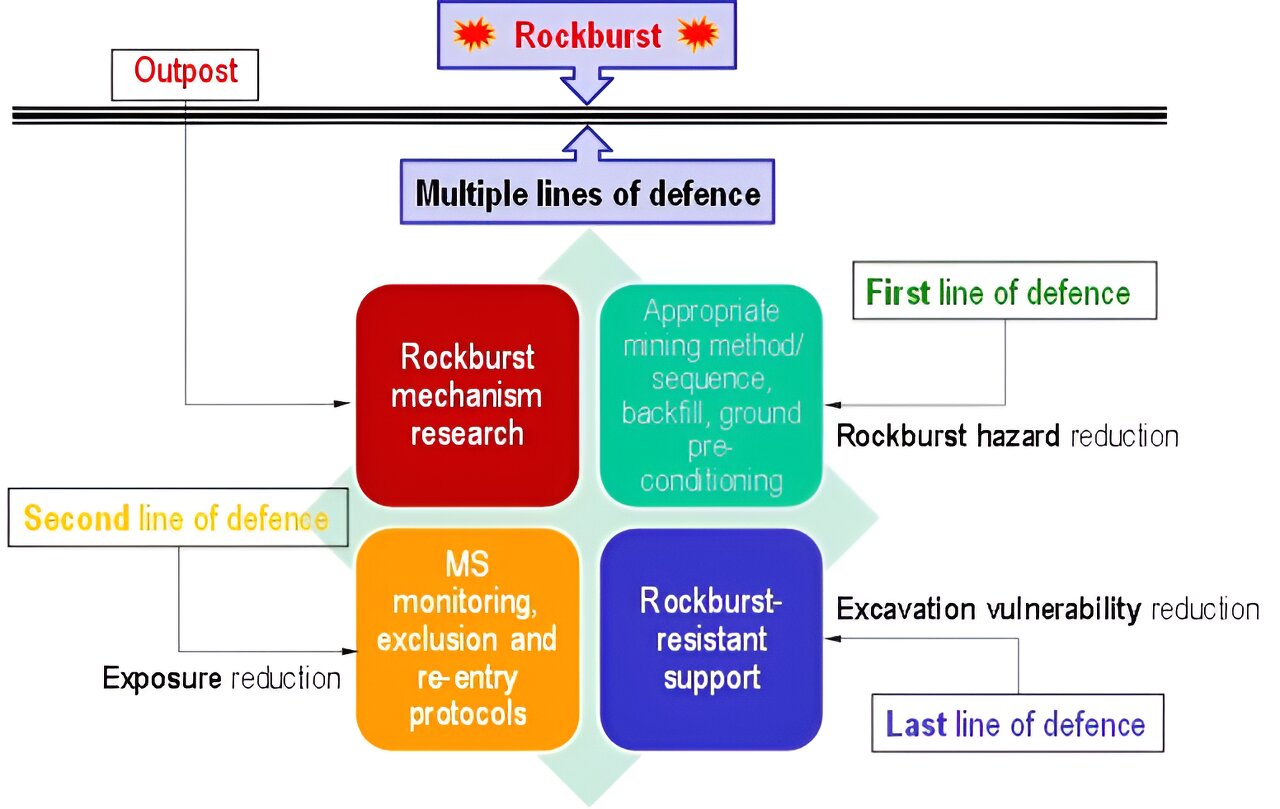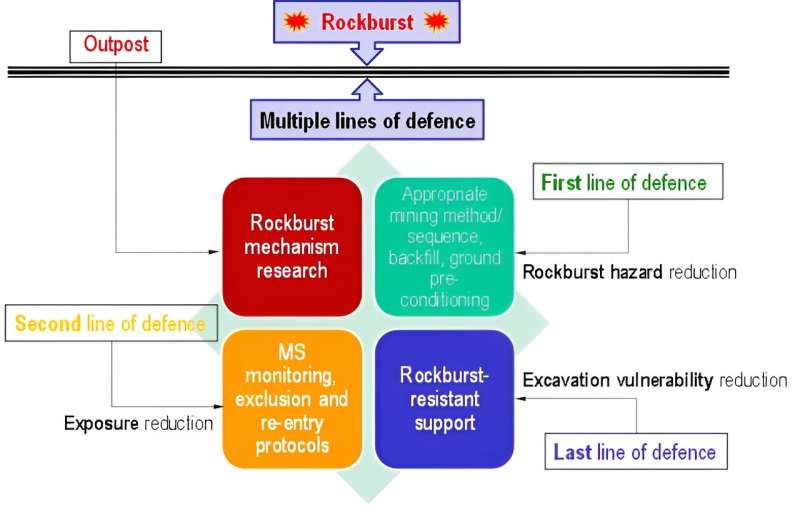
by KeAi Communications Co.

Mining of minerals is important for the advancement of modern society. However, over many years of mining, shallow resources are depleting with the need to migrate to deep levels.
Mining at depth presents notable challenges, and among the foremost concerns is the occurrence of rockbursts, which are characterized by sudden and violent releases of accumulated strain energy within the rock mass. Consequently, this pose significant threats to the safety of personnel and the integrity of underground infrastructure.
In a study published in the journal Deep Resources Engineering, Dr. Ming Cai from Laurentian University in Canada presents a new approach on rockburst risk management.
“The research emphasizes the critical importance of understanding rockburst risks and explores the factors influencing these occurrences, risk assessment methodologies, and various control and mitigation techniques,” shares sole author Cai. “As rockburst risks stem from a combination of the rockburst hazard, excavation vulnerability and exposure, risk control needs to be focused on these three aspects.”
The paper advocates for strategic measures to reduce rockburst hazards and excavation vulnerability, with a particular emphasis on the importance of ground support systems. Additionally, it explores rockburst warning and prediction, addressing the challenges and highlighting the significance of advanced monitoring techniques and engineering control measures.
“Even if we can predict rockbursts, so what? Assuming that we correctly predict a rockburst’s occurrence time, location and magnitude, we can then evacuate workers from the mining area in a timely fashion,” says Cai. “However, if we do not support the drifts and stopes well against rockburst damage, severe damage to mine openings might lead to disruption of mining operations.”
In extreme cases, it might lead to mine closure. “We want the workers to be safe no matter what; we also want the investment to be safe,” adds Cai.
One of the standout aspects of the paper is its exploration of multiple lines of control measures. “The best approach for rockburst risk management is to build a multiple-line defense system, establishing and maintaining multiple lines or layers of defense, each serving a specific purpose,” says Cai.
In particular, improved mine design and mining sequencing aim at reducing the rockburst hazard is the first line of defense, while microseismic monitoring for mitigating the consequences of rockburst is the second line of defense. For the last line of defense, rockburst-resistant support can be employed to reduce the vulnerability of mine excavations.
Overall, this new study contributes to improving safety in mining operations by promoting a multi-faceted approach that combines traditional engineering controls with administrative measures and cutting-edge technologies.
More information:
Ming Cai, Rockburst risk control and mitigation in deep mining, Deep Resources Engineering (2024). DOI: 10.1016/j.deepre.2024.100019
Provided by
KeAi Communications Co.
Citation:
A new approach for rockburst risk control and mitigation in deep mining (2024, September 25)
retrieved 25 September 2024
from https://phys.org/news/2024-09-approach-rockburst-mitigation-deep.html
This document is subject to copyright. Apart from any fair dealing for the purpose of private study or research, no
part may be reproduced without the written permission. The content is provided for information purposes only.